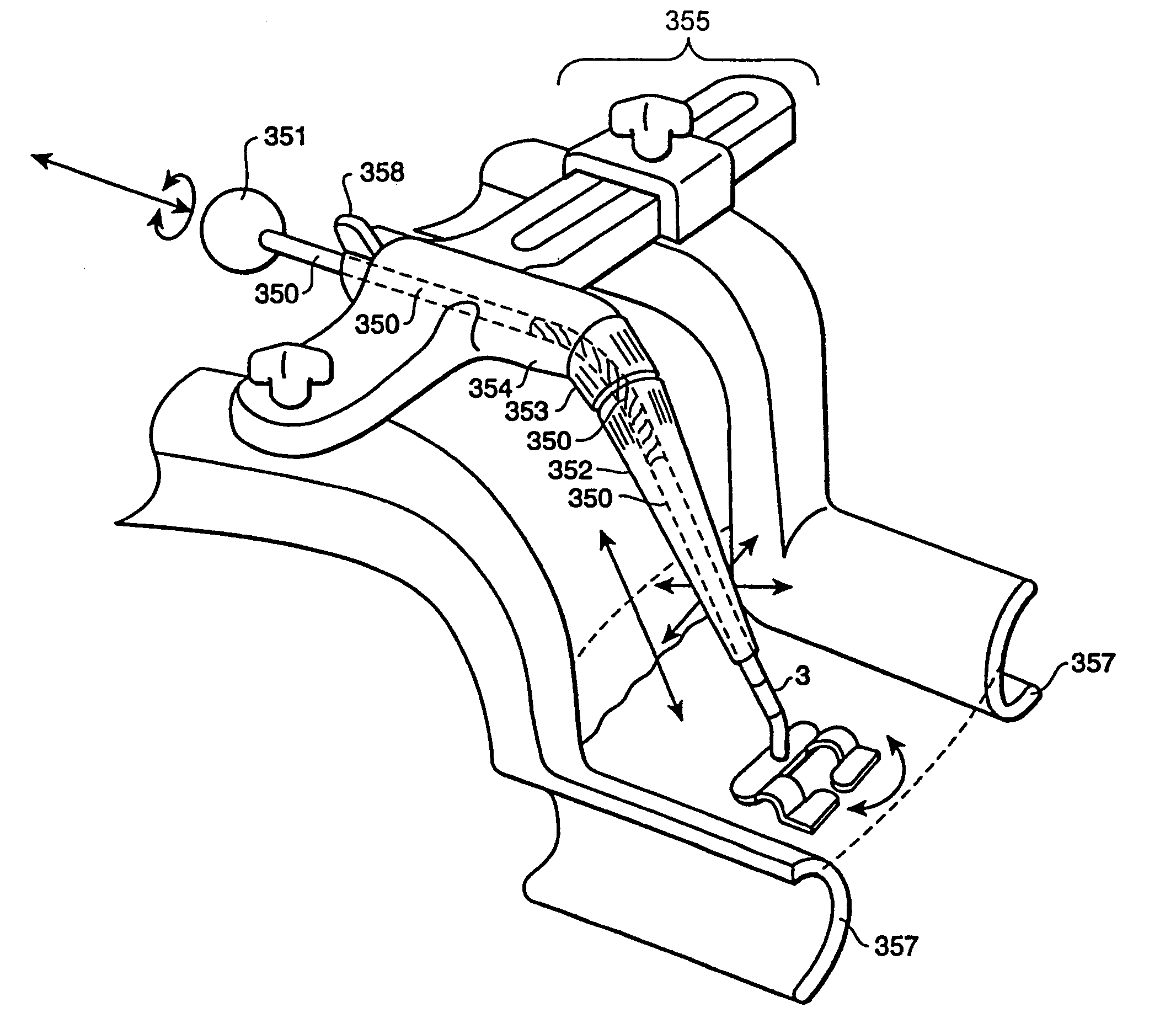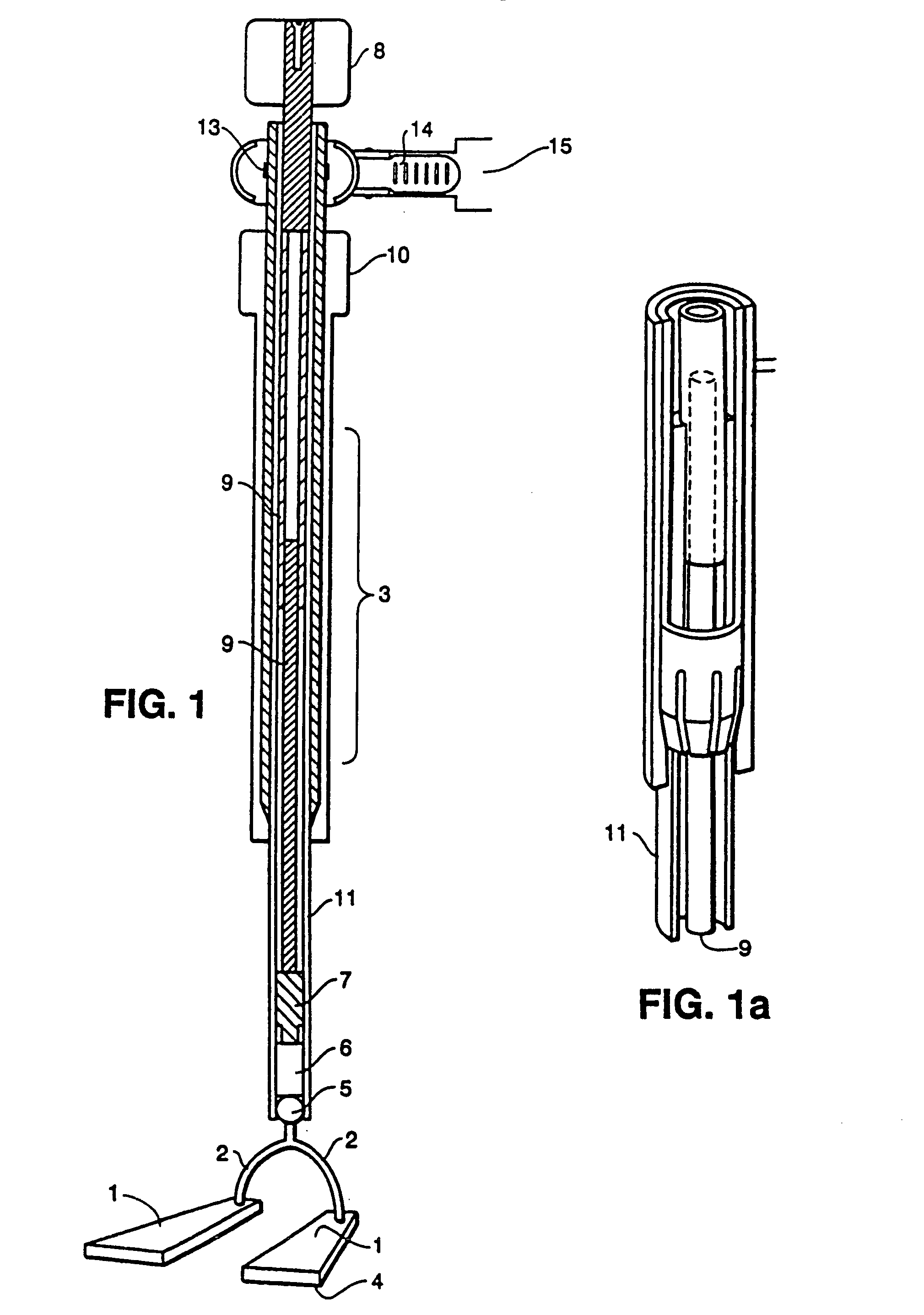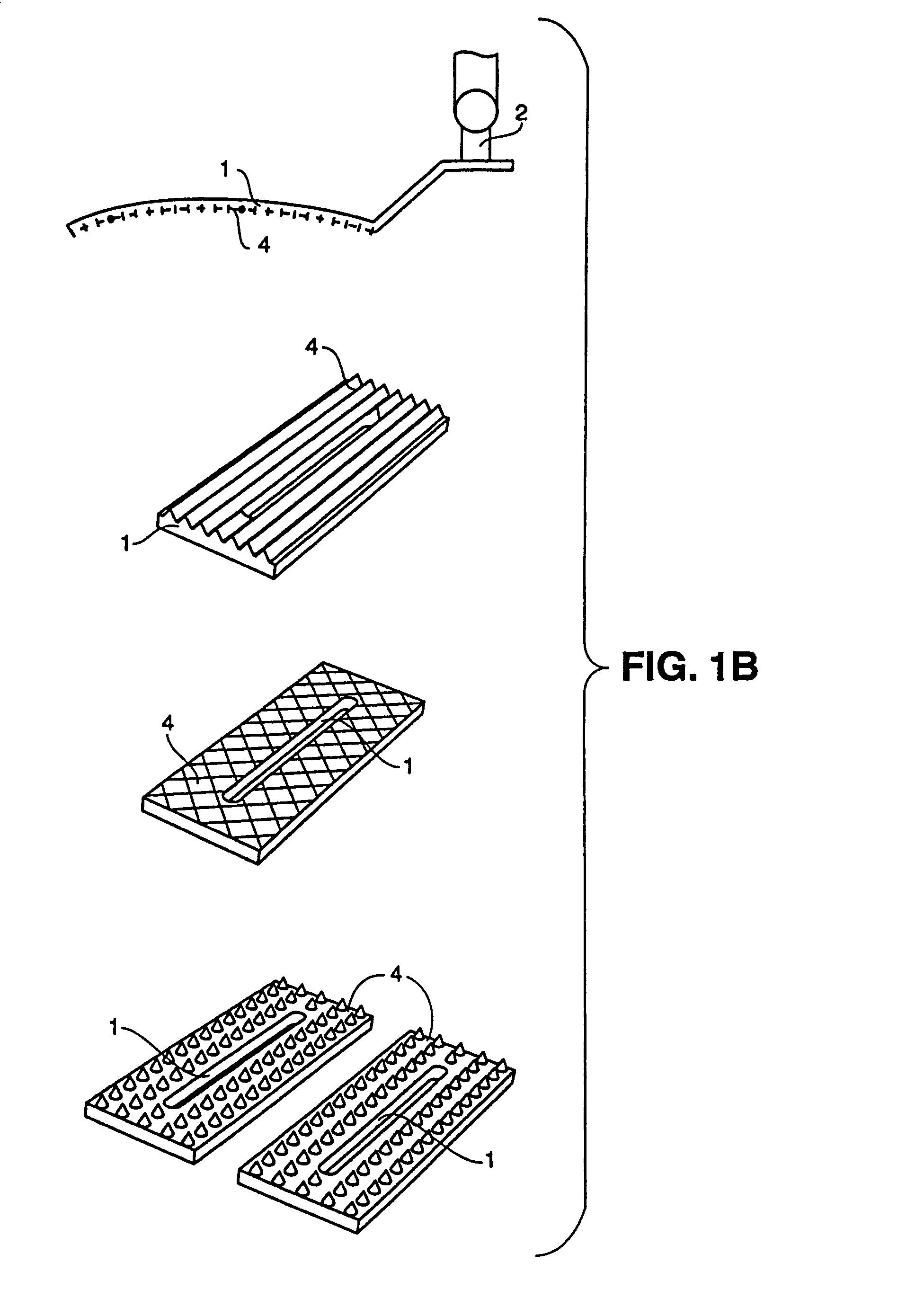Surgical instruments and procedures for stabilizing the beating heart during coronary artery bypass graft surgery
a technology for stabilizing and beating hearts, which is applied in the direction of surgical staples, surgical forceps, osteosynthesis devices, etc., can solve the problems of not widely practiced beating-heart cabg procedures, damage to the heart, and the cardiovascular system, so as to reduce the risk of heart failure, less trauma to the patient, and the effect of stabilizing the heart movemen
- Summary
- Abstract
- Description
- Claims
- Application Information
AI Technical Summary
Benefits of technology
Problems solved by technology
Method used
Image
Examples
Embodiment Construction
[0103]This invention is surgical instruments for stabilizing the beating heart and methods for their use. The means for stabilizing the beating heart are comprised of several alternative structures at least one component of which engages the surface of the heart to stabilize the beating heart during coronary surgery. The instruments provide the capability to exert and maintain a stabilizing force on the heart by contacting the heart with a component of the stabilizing means and by functionally fixing the position of the stabilizing means throughout the duration of a surgical procedure.
[0104]The instruments and methods of the invention are preferably used for stabilization of the beating heart during a minimally invasive coronary artery bypass graft (CABG) operation which has been specially developed to facilitate completion of an anastomosis, to a target coronary artery for example by the placement of a bypass graft or the connection of a source artery, without requiring cardiac arr...
PUM
 Login to View More
Login to View More Abstract
Description
Claims
Application Information
 Login to View More
Login to View More - R&D
- Intellectual Property
- Life Sciences
- Materials
- Tech Scout
- Unparalleled Data Quality
- Higher Quality Content
- 60% Fewer Hallucinations
Browse by: Latest US Patents, China's latest patents, Technical Efficacy Thesaurus, Application Domain, Technology Topic, Popular Technical Reports.
© 2025 PatSnap. All rights reserved.Legal|Privacy policy|Modern Slavery Act Transparency Statement|Sitemap|About US| Contact US: help@patsnap.com



